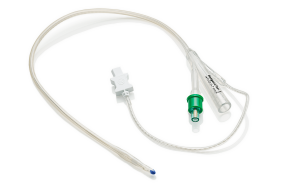The BIP Foley catheter is a specialized medical device that plays a crucial role in peritoneal drainage. It is a variant of the well-known Foley catheter, which is commonly used for urinary drainage. The BIP Foley catheter serves a distinct purpose, specifically designed to address the need for peritoneal fluid drainage in certain medical conditions.
The peritoneum is a thin, transparent membrane that lines the abdominal cavity and covers the organs within it. It provides support and protection to the abdominal organs while also facilitating their movement. Under normal circumstances, the peritoneal cavity contains a small amount of fluid that lubricates the organs, allowing them to function optimally.
However, in various medical conditions, the balance of fluid in the peritoneal cavity can be disrupted, leading to the accumulation of excess fluid. This accumulation can cause abdominal distention, discomfort, and other complications. Conditions such as ascites, which involve the abnormal buildup of fluid in the peritoneal cavity, are common indications for the use of a BIP Foley catheter.
The BIP Foley catheter is specifically designed to address the drainage needs associated with these conditions. It consists of a flexible tube made of medical-grade materials, such as silicone or latex, which allows for easy insertion into the patient’s bladder. The distal end of the catheter is equipped with an inflatable balloon made of a soft, pliable material, typically silicone.
The placement of the BIP Foley catheter involves a sterile procedure performed by a trained healthcare professional. The catheter is inserted into the patient’s bladder through the urethra, just like a regular Foley catheter. Once the catheter is properly positioned within the bladder, the balloon at the distal end is inflated with a sterile solution. This inflation serves a vital purpose—it anchors the catheter in place, preventing it from slipping out unintentionally.
The key differentiating factor of the BIP Foley catheter is its additional lumen, or channel, that extends beyond the bladder. This lumen allows the catheter to extend into the peritoneal cavity, thereby facilitating the drainage of excess fluid. The drainage occurs through the catheter’s proximal end, where a collection bag or other appropriate receptacle is attached to collect the fluid.
To ensure effective peritoneal drainage, the BIP Foley catheter must be carefully monitored and maintained. Healthcare professionals regularly assess the amount and characteristics of the drained fluid, as well as the patient’s overall condition. The catheter’s balloon is periodically deflated and re-inflated to prevent tissue damage or obstructions. Additionally, the catheter insertion site is carefully monitored for any signs of infection or other complications.
In conclusion, the BIP Foley catheter is a specialized medical device designed for peritoneal drainage in conditions such as ascites. It provides an effective and safe means of removing excess fluid from the peritoneal cavity, relieving symptoms and improving patient comfort. With proper placement, monitoring, and maintenance, the BIP Foley catheter plays a crucial role in the management of specific medical conditions, enhancing patient care and well-being.



